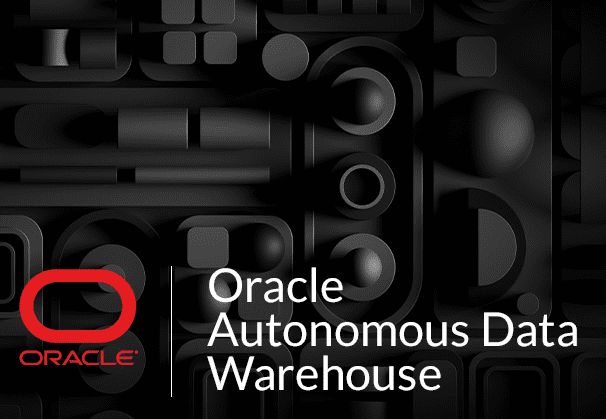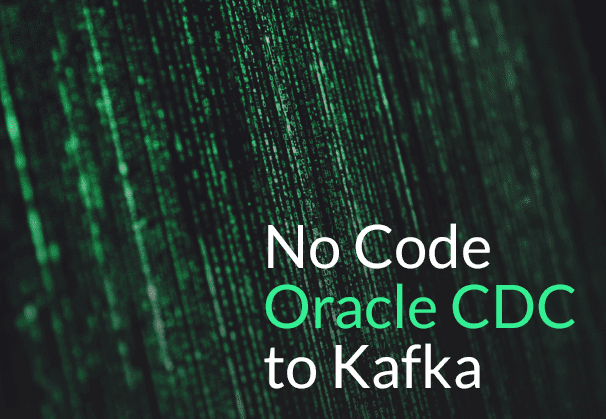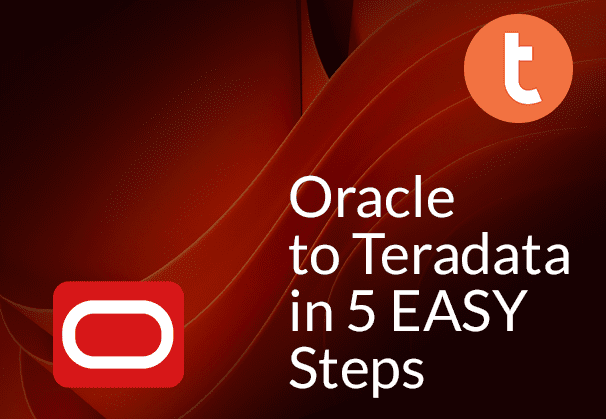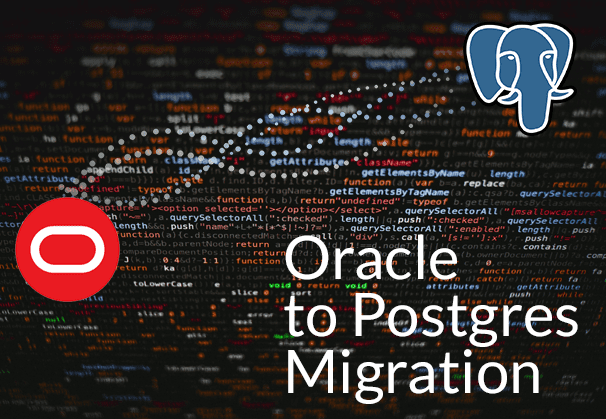This blog talks about the Oracle Autonomous Data Warehouse, its amazing benefits, features and use cases. Learn what makes Oracle ADW different and how it is a self-managed, innovative workhorse for many different types of data workloads. All this, while automating many tedious data tasks. No wonder DBAs love it!
Quick Links
- Oracle Autonomous Database Services
- What is Oracle Autonomous Data Warehouse (Oracle ADW)?
- Why should you use the Oracle Autonomous Data Warehouse?
- Benefits of the Oracle Autonomous Data Warehouse (Oracle ADW)
- Oracle ADW Features
- Oracle Autonomous Data Warehouse Use Cases
- How Oracle ADW and the Oracle Ecosystem support Machine Learning
- Oracle Autonomous Data Warehouse Deployment
- Loading data to Oracle ADW with BryteFlow
Oracle Autonomous Database Services
Oracle Autonomous Database is a single data platform that answers multiple requirements without the need to integrate new databases. It allows for the use of SQL, JSON documents, graph, geospatial, text, and vectors in one database to create new features quickly. It helps in building apps for any workload, and to create apps automatically without coding. It is a version of the basic Oracle database but Cloud-based and fully automated. BryteFlow for Oracle Real-Time Replication
Oracle Autonomous Database enables you to choose the LLM you want – open source or commercial. It uses Select AI to automatically translate natural language into database queries and enables contextual conversations, without resorting to coding or manual operations using complex interfaces. You can use integrated AI services and in-database machine learning (ML) to improve your apps with speech recognition, text and image analysis and personalized recommendations. Oracle CDC (Change Data Capture): 13 things to know
The Oracle Autonomous Database comes in two editions:
Oracle Autonomous Data Warehouse (ADW): This edition of the database is customized for data warehousing, data lakes, data marts and machine learning workloads. Oracle to Redshift Migration Made Easy (2 Methods)
Oracle Autonomous Transaction Processing (ATP): This edition is customized for online transaction processing, batch processing, machine learning, application development, reporting, IoT, and mixed workload environments. In this blog we will discuss the former. Oracle to Snowflake: Everything You Need to Know
What is Oracle Autonomous Data Warehouse (Oracle ADW)?
Oracle Autonomous Data Warehouse (ADW) is touted to be the world’s first autonomous database that is highly optimized for analytics workloads. It is fully managed, Cloud-based and is a constituent of Oracle Cloud. Oracle ADW uses artificial intelligence and machine learning to automate and manage administrative tasks. It needs no maintenance and can run itself, secure itself and even repair itself. It can handle huge volumes of data and enables data scientists, business analysts and non-technical users to benefit from high-performance analytics and data-driven decisions. According to an IDC report, it can lower operational costs by 63% on average. Connect Oracle to Databricks and Load Data the Easy Way
Why should you use the Oracle Autonomous Data Warehouse?
There is a huge need for enterprise data warehouses today. Considering that the EDW is a database that collects data from a range of application databases and systems, the data needs to be normalized and designed to allow for different kinds of querying and reporting. Not only is this a database like this difficult to design but also requires a lot of tweaking when it starts running. The reason for this is there may be a change in user requirements, which could call for continual adjustments to how the tables are indexed and the data is organized. This issue has become exacerbated in current times owing to the exploding data volumes, different types of data, siloed data warehouse deployments of individual departments and rise in concurrent users. Dealing with these issues is often a laborious job that can take up most of your DBA’s time. Oracle to SQL Server Migration: Reasons, Challenges and Tools
With the Oracle Autonomous Data Warehouse, time-consuming issues like changing database schema to incorporate fresh data or adjusting indexing schemes can be avoided. Oracle ADW uses machine learning and advanced algorithms to organize data and index it continually and automatically while the database is running. This results in a much better performance than a manually tuned database. It’s also great from a data security perspective since security patches and upgrades are carried out without interrupting the database service. In contrast, databases in enterprise datacenters may go for long periods without application of patches, exposing data to security breaches. Oracle to Postgres Migration (The Whys & Hows)
Benefits of the Oracle Autonomous Data Warehouse (Oracle ADW)
- Oracle ADW is completely autonomous – it self-patches, self-tunes and performs upgrades while the system is running. Manual processing is bypassed, eliminating human error. SingleStore DB – Real-Time Analytics Made Easy
- Oracle ADW can create data warehouse service in minutes, owing to pre-configuration and optimization. Oracle vs Teradata (How to Migrate in 5 Easy Steps)
- Easy to use, analytics can be immediately run on Oracle ADW. Building of low-code apps is possible without needing to invest in data center infrastructure or hiring of IT resources. Oracle To Azure Cloud Migration (Know 2 Easy Methods)
- Oracle ADW provides adaptive indexing and caching using artificial intelligence and machine learning fueled by Oracle Exadata infrastructure. Oracle to Postgres Migration (The Whys & Hows)
- Indexing and caching are automatically optimized in Oracle ADW which helps to reduce usage of CPU resources. Oracle CDC (Change Data Capture): 13 things to know
- Oracle ADW provides granular control – enabling independent scaling of compute and storage so customers can avoid overpaying for unused Cloud resources. SingleStore DB – Real-Time Analytics Made Easy
- Machine learning technology is built into Oracle ADW so there are no manual configuration errors and complete reliability. Unlimited concurrency along with advanced clustering technology means no downtime for users, even with expanding data volumes.
- Oracle ADW facilitates queries on all types of data. You can load and analyze data in just a few clicks, enabling quick data insights and business decisions. Learn about Oracle to Oracle Replication
- There is no need for fresh investment to access on-premise Oracle data management workloads on Oracle ADW, they are fully compatible with Oracle Cloud, allowing customers to benefit from their existing investments. Oracle to SQL Server Migration: Reasons, Challenges and Tools
- Moving to Oracle Autonomous Data Warehouse means a reduction in data costs. Oracle ADW has autoscaling and built-in features that keep consumption costs in tandem with workload requirements. It has a much lower TCO for data warehousing workloads than other DWs. Oracle to Snowflake: Everything You Need to Know
- Oracle ADW can be run on multiple Cloud platforms so there is no vendor lock-in. It enjoys deep integration with AWS, Azure and Google Cloud platforms, offering enterprise customers an option to deploy data on the Cloud platform of their choice. Oracle to Redshift Migration Made Easy (2 Methods)
Oracle ADW Features
Oracle ADW simplifies data loading
Oracle ADW simplifies data loading and distribution making it easy for team collaboration. Data can be loaded and transformed with easy drag-and-drop actions, users can build business models, understand data dependencies and discover data anomalies easily. Oracle to Postgres Migration (The Whys & Hows)
Oracle ADW supports Machine Learning Models
Machine Learning models can be created and run in Oracle Autonomous Data Warehouse by using optimized and scalable in-database algorithms. It helps in the structure of machine learning models by obviating the need to migrate data to external machine learning systems. How to Migrate Data from Oracle to HANA
Oracle ADW aids in Data Relationship Discovery with Oracle Graph Studio
Oracle Autonomous Data Warehouse has introduced Graph Studio which is a self-service graph database and dedicated, managed platform for analysis and graph visualization. This helps users in depiction of complex relationships and representation of enterprise data.
Oracle Autonomous Data Warehouse for Geospatial Intelligence
The Oracle Autonomous Data Warehouse has spatial features that support all kinds of spatial applications, workloads, and datasets leading to use for in-depth location intelligence and geospatial applications. Oracle Replication in Real-Time Step by Step
Oracle ADW delivers non-stop high performance
Oracle ADW keeps tabs on system performance, tuning as required, to automatically ensure high performance on a continual basis, irrespective of growing data volumes, complex workloads and increasing data types. It runs on the Oracle Exadata foundation which enables enterprise class capabilities and optimizes data warehouse performance. SingleStore DB – Real-Time Analytics Made Easy
Oracle ADW increases productivity through its converged database
Oracle Autonomous Data Warehouse uses a converged database, to support multi-model data and multiple workloads. It is constituted of self-managed tools to enhance the productivity of data teams. Oracle to Snowflake: Everything You Need to Know
Oracle ADW is completely self-managed
Oracle Autonomous Data Warehouse is self-driving and automates database tuning and optimization to cut down on manual tasks and deliver high quality performance. Autonomous Data Warehouse is self-securing – it applies security patches and upgrades with complete tenant and data isolation. It encrypts data at rest and in transit by default. It also self-repairs by detecting and fixing errors automatically. How to Select the Right Data Replication Software
Oracle Autonomous Data Warehouse Use Cases
Oracle ADW has many use cases, some of which we lay out here.
- Data integration with Oracle ADW: ADW aggregates data from different data sources.
- High performance data analytics with Oracle ADW: Running complex, advanced analytics on very large datasets is a particular strength. This could include customer data analytics to understand consumer behavior, analyzing IoT data from devices, and financial analytics to focus on budgeting, forecasting and operational performance. How to Migrate Data from Oracle to HANA
- Analytics in Real-time with Oracle ADW: Integrating real-time data streams for real-time analytics. Oracle to Kafka CDC Methods
- Compliance and Reporting with Oracle ADW: Storing historical data to enable compliance and reporting.
- Business Intelligence (BI) with Oracle ADW: Creating and providing interactive dashboards and reports for data-focused decisions. It is compatible with many third-party BI and Analytics Apps. Oracle to SQL Server Migration: Reasons, Challenges and Tools
- On-Premise Data Warehousing with Oracle ADW: Building on-premise data warehouse and data marts. BryteFlow for Real-Time Oracle CDC
- Predictive Analytics using Oracle ADW: Creating and training predictive models for data-powered insights and forecasting. Oracle to Oracle Replication with BryteFlow
How Oracle ADW and the Oracle Ecosystem support Machine Learning
Training and deploying machine learning models is on every organization’s agenda these days. Here’s how using Oracle ADW can help with deployment of Machine Learning models. Oracle Autonomous Data Warehouse integrates with Oracle Machine Learning and has built-in tools to help load and prepare data, and train, implement and manage machine learning models. You can also use other tools in conjunction with these if required. Oracle to Postgres Migration (The Whys & Hows)
Oracle ADW makes it easy to integrate data
Oracle Autonomous Data Warehouse has built-in tools to get, load and transform data. ADW has a load feature that enables fast loading from local or object storage. Another feature called Autonomous Data Transforms enables connections to data from different source types and provides ELT functionality. For advanced use cases Oracle Cloud Infrastructure Data Integration is available. This is a fully managed, serverless, native cloud service that helps with ETL tasks like data ingestion, cleansing and transforming before loading to targets on OCI. Oracle to Snowflake: Everything You Need to Know
Oracle Autonomous Data Warehouse provides convenience
We have already spoken about the Oracle Autonomous Data Warehouse, which is a DB service that takes care of itself- self-securing, self-driving, self-tuning, and self-repairing. It is optimized for different types of data warehousing workloads. There is no hardware to be managed or software to be installed, which is highly convenient and time-saving. Oracle Cloud Infrastructure creates, patches, backs up, upgrades and tunes the database for you. Oracle to Oracle Replication with BryteFlow
Oracle ADW allows you to load data in diverse formats which include structured, JSON, XML, graph, and spatial. Besides this the Autonomous Tools enable basic ETL and loading of data into tables. Oracle Machine Learning present in ADW’s core, allows for running of in-database algorithms in the kernel of the database creating first-class database objects which can be immediately deployed. Oracle To Azure Cloud Migration (2 Easy Methods)
Oracle Cloud Infrastructure Object Storage – easy to use and access
Oracle Cloud Infrastructure Object Storage is a storage platform that is high performance and internet-scale. It can store an almost limitless amount of unstructured data of any type including analytics data. Data can be stored and pulled directly from the Internet or from the Cloud platform. There are easy-to-use management interfaces that enable you to start with small volumes and scale seamlessly when required, all without impacting performance. How to Select the Right Data Replication Software
Deploying Machine Learning models with Oracle Machine Learning Services (OML)
Oracle Machine Learning Services provides Oracle Machine Learning (OML) functionality for deploying models and model lifecycle management for both, in-database Oracle Machine Learning models and third-party Open Neural Networks Exchange (ONNX) machine learning models via REST APIs. How to migrate data from Oracle to HANA
The REST API for Oracle Machine Learning Services provides REST endpoints which can be authenticated through Autonomous Data Warehouse. The endpoints facilitate the storage and management of machine learning models and metadata, besides helping to create scoring endpoints for models. Oracle Machine Learning Services supports regression models and third-party classification that can be built using packages such as Scikit-learn and TensorFlow, which can be later exported using ONNX format. Oracle Machine Learning Services enables integrated cognitive text analytics which helps with keywords, summary, topic discovery, sentiment, and similarity. Oracle Machine Learning Services supports classification of images deploying third-party ONNX format models and supports scoring using images or tensors. Oracle to Kafka CDC Methods
It is also possible for users to use in-database models from SQL, R, and Python to predict directly in the database. Users can use OML4Py embedded Python execution to create user-defined Python functions with models produced from third-party packages. Predictions can be made from Python and REST interfaces. Oracle to Oracle Replication
Team collaboration with Oracle Machine Learning Notebooks and UIs
Data scientists and data analysts get a collaborative user interface with Oracle Machine Learning Notebooks. This helps them to work with SQL and Python interpreters while doing Machine Learning in Oracle Autonomous Database. The Oracle Autonomous Database includes Autonomous Data Warehouse (ADW), Autonomous Transaction Processing (ATP), and Autonomous JSON Database (AJD). The Notebooks interface enables users to access Oracle’s high-performance in-database implementations of machine learning algorithms using Python, SQL, and PL/SQL. Users can also access in-database functionality by connecting to Autonomous Database through external interfaces, like SQL Developer, open-source notebook environments, and third-party IDEs. Oracle CDC (Change Data Capture): 13 things to know
Automated machine learning is possible with the Oracle Machine Learning AutoML User Interface (OML AutoML UI). This is a no-code user interface that automates machine learning and provides easy deployment to Oracle Machine Learning Services. There is also an OML4Py that provides a Python API for automated machine learning (AutoML). This allows for automated algorithm and feature selection, and automated model tuning and selection. Oracle to Snowflake: Everything You Need to Know
Oracle Analytics Cloud for Analytics
Oracle Analytics Cloud is a public cloud service that is scalable, secure and has complete capabilities to perform collaborative analytics for enterprises and their teams. It is integrated with Oracle Machine Learning and can access in-database models that can be visualized, searched and deployed within the workflows and dashboards of Oracle Analytics Cloud. Oracle to Redshift Migration Made Easy (2 Methods)
Oracle Autonomous Data Warehouse Deployment
The Oracle ADW is available with three deployment options:
- Shared Serverless Deployment: Serverless runs on Oracle Cloud Infrastructure. This provides a full range of benefits of Oracle Autonomous Data Warehouse at a reduced price. Here multiple customers share the resources of an Exadata Cloud infrastructure. You can start with no minimum commitment, benefit from quick database provisioning and scale compute and storage independently. Oracle Replication with BryteFlow
- Dedicated Deployment: This deployment option of Oracle ADW enables strict customer isolation, better predictability and organizational control regarding autonomous policies. With this deployment you must first sign up for a dedicated Exadata Cloud infrastructure that is isolated from other tenants. It will not have a shared processor, memory, network, or storage resources. Dedicated infrastructure is available on Oracle Cloud Infrastructure and Exadata Cloud@Customer. Oracle CDC (Change Data Capture): 13 things to know
- Oracle Dedicated Region Cloud@Customer: In this deployment the Oracle Autonomous Data Warehouse on Exadata is provided in your enterprise data center for complete data control and security. Exadata Cloud@Customer deployment is perfect for on-prem customers who need the Autonomous Database but cannot move to the public Cloud due to data security and data control requirements, corporate policies, network latency etc.
Need to know Oracle Autonomous Data Warehouse pricing? Click here
Loading data to Oracle ADW with BryteFlow
BryteFlow can help you migrate data easily into the Oracle Autonomous Data Warehouse. BryteFlow is a completely no-code, real-time replication tool that has the highest throughput for Oracle sources (at least 6x faster than Oracle GoldenGate). What’s more, BryteFlow supports rapid loading of heavy data volumes with multi-thread parallel loading and smart, configurable partitioning. BryteFlow loads data from Oracle sources to multiple Cloud platforms including popular destinations like Snowflake, SQL Server, Azure Synapse, ADLSGen2, Redshift, S3, BigQuery, Oracle, Databricks, Postgres, SingleStore, Teradata and Kafka for integration and consumption of data. How BryteFlow Works
Highlights of BryteFlow as a Real-Time Replication Tool
- BryteFlow Ingest is a no-code data replication tool that replicates your data using CDC from transactional sources like SAP, Oracle, SQL Server, MySQL and PostgreSQL to popular platforms like AWS, Azure, SQL Server, BigQuery, PostgreSQL, Snowflake, SingleStore, Teradata, Databricks and Kafka in real-time, providing ready to use data on the destination.
- Uses log-based Oracle CDC to replicate data to on-premise and Cloud destinations in real-time
- Very high throughput – replicates petabytes of data in minutes (1,000,000 rows in 30 secs). AWS DMS CDC and Limitations for Oracle Sources
- Supports fast loading of initial and incremental data with multi-thread parallel loading, configurable partitioning and compression. The Complete Guide to Real-Time Data Replication
- BryteFlow automates every replication process including data extraction, data ingestion, Change Data Capture, DDL, data mapping, data prep, masking, merging and more. It creates schema and tables automatically on target. Database Replication Made Easy – 6 Powerful Tools
- BryteFlow is 6x faster than GoldenGate with very high throughput, transferring petabytes of data in minutes – approx. 1,000,000 rows in 30 seconds. GoldenGate CDC and a GG Alternative
- BryteFlow provides replication support for all Oracle versions, including Oracle 12c, 19c, 21c and future releases for the long term. Oracle Replication in Real Time
- It builds automated SCD type2 history on the destination with the commit timestamp in Oracle. Any constantly updated audit source fields can be removed from replication, so that the changes captured are true changes on the source. The Complete Guide to Real-Time Data Replication
- BryteFlow TruData automates data reconciliation between source and destination, with counts and checksums, and can repair or correct non-reconciled data without doing an initial extract.
Conclusion
In this blog we have seen how the Oracle Autonomous Data Warehouse functions, its benefits and features, and the different use cases it can be used for. We have also introduced BryteFlow as a real-time replication tool to load your data into Oracle ADW. If you would like a demo of BryteFlow, please contact us.





